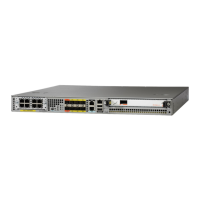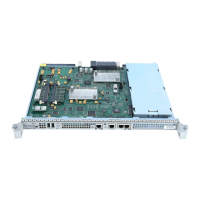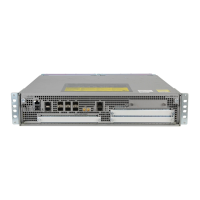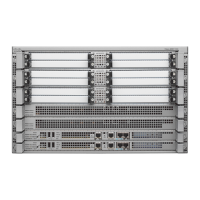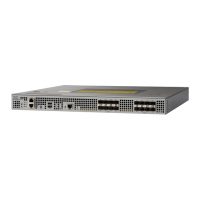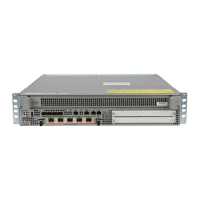Using Bit Error Rate Tests
BERT (Bit-Error Rate Testing) is used for analyzing quality and for problem resolution of digital transmission
equipments. BERT tests the quality of an interface by directly comparing a pseudorandom or repetitive test
pattern with an identical locally generated test pattern.
The BERT operation is data-intensive. Regular data cannot flow on the path while the test is in progress. The
path is reported to be in alarm state when BERT is in progress and restored to a normal state after BERT has
been terminated.
BERT is built into most of the serial SPAs. With BER tests, you can test cables and signal problems in the
field.
•
For the 2-Port and 4-Port Channelized T3 SPA, you can configure individual T1 lines to run BER tests,
but only one BER test circuit exists for all 28 T1 lines. Hence, only one BER test can be run on a single
T3 port at any given time.
•
For the 8-port Channelized T1/E1 SPA, there are six framer-assisted BERT engines, and six BER tests
may run concurrently.
•
For the 1-Port Channelized OC-3/STM-1 SPA and 1-Port Channelized OC-12/STM-4 SPA, you can
run a maximum of 27 concurrent tests across all paths on the SPA.
BERT operation is data-intensive. Regular data cannot flow on the path while the test is in progress. The
path is reported to be in alarm state when BERT is in progress and restored to a normal state after BERT
has been terminated.
Note
There are two categories of test patterns that can be generated by the onboard BER test circuitry: pseudorandom
and repetitive. Pseudorandom test patterns are exponential numbers and conform to the CCITT/ITU O.151
and O.153 specifications; repetitive test patterns are all zeros, all ones, or alternating zeros and ones.
A description of the test patterns follows:
•
Pseudorandom test patterns:
◦
2^15 (per CCITT/ITU O.151)
◦
2^20 (per CCITT/ITU O.153)
◦
2^23 (per CCITT/ITU O.151)
◦
QRSS (quasi-random signal sequence) (per CCIT/ITU O.151)
•
Repetitive test patterns:
◦
All zeros (0s)
◦
All ones (1s)
◦
Alternating zeros (0s) and ones (1s)
Cisco ASR 1000 Series Aggregation Services Routers SIP and SPA Software Configuration Guide, Cisco IOS
XE Everest 16.5
338 OL-14127-17
Troubleshooting the Serial SPAs
Using Bit Error Rate Tests
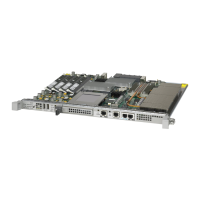
